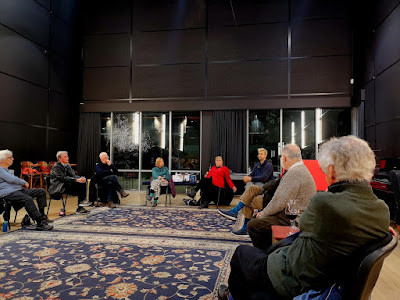Photography Review by Brian Rope
Various artists: The Body Electric
National Gallery of Australia | Until 26 January
2021
The Body Electric presents works by 25 woman-identifying artists, pioneers with respect to recent photography and video. It is about sex, pleasure, and desire; celebrates women’s erotic experiences; explores stories of domestic intimacy and love; examines how women’s sexuality has historically been represented; and shows sex, love, and loss as an animating part of human experience.
On the National Gallery of Australia (NGA) website, Curator Anne O’Hehir highlights one of the artists, Nan Goldin. O’Hehir notes that, historically, photography has played a pivotal role in the way sex and sexuality are seen in society; images of women by heterosexual men for heterosexual men dominating. This exhibition reveals a different view to us. O’Hehir’s piece is well worth reading before visiting.
A tender image by Pixy Liao used on the NGA website to represent the exhibition on its listing of current exhibitions clearly illustrates intimacy. Her other works shown are sexy and surreal.
Australian
Polly Borland is also represented. Others have said her artistic work tends to
marry the infantile with a sexual interest in parts of the body other than the
sexual organs. The examples here are consistent with that view.
A 1976
work by Jo Ann Callis portrays an anonymous woman seated, holding a flashlight
in one hand. Decide for yourself what her purpose is but, almost certainly, we are
meant to think about masturbation.
Christine
Godden shows us her own umbilicus in a simple selfie. The title of this work is
Self. Sunny day in winter 1974. An alternate title used for this image
is Jeans and jumper. Both titles are simple descriptions of things in
the image, leaving the interpretation of it open to us as viewers. Many of
Godden’s works are intended to show ‘how women see and how women think’.
Works by Nan Goldin are much more powerful. Again, titles are simple, but there is strong material in these images.
Likewise, to the casual observer, a beautiful backlit
transparency by Petrina Hicks might be seen simply as a photo of a woman hiding
her face behind a rather lovely conch shell. However, the shape of the shell
immediately speaks of the pleasure and desire this exhibition is about.
Fiona Pardington
rephotographed found erotic 1950s images of women. Intended for publication in
men’s magazines as pornographic fodder, they fit neatly into her thinking that
photography is deeply sexy.
Collier Schorr challenges binary notions of gender and sexuality, reflecting both her queerness and desire. She asserts that her photographs of men and boys are of ‘women’.
Francesca Woodman plays hide and seek with her own body, producing intense yet witty and playful images.
Claire Lambe contributes a provocative red image that allows viewers to muse extensively as to what she is seeking to say to us.
Claire Lambe - Untitled (red Emily) 2017
chromogenic photograph, 94 (h) x 140 (w) cm
image courtesy of the artist and Sarah Scout Presents
An
exhibition such as this must include work by Cindy Sherman. Here is a
disturbingly explicit view of a female doll crouched on knees with a ready
plastic orifice.
I invited my wife to accompany me to the exhibition so that I might witness her reactions and discuss the works. I also observed other visitors, mostly older women. But none of them, of whatever age or gender, revealed their thoughts to me.
Another of the included photographers, Annie Sprinkle, is quoted as saying “I want to tell women that they are sexually powerful beings, but they often don’t get in touch with it because they are socialised to please men.” Is that still true today? Each of us will have our own thoughts.
This review was originally commissioned by the Canberra Times but not used by them. I have also published on my personal blog today at
https://brianropephotography.wordpress.com/2020/07/27/the-body-electric/.














